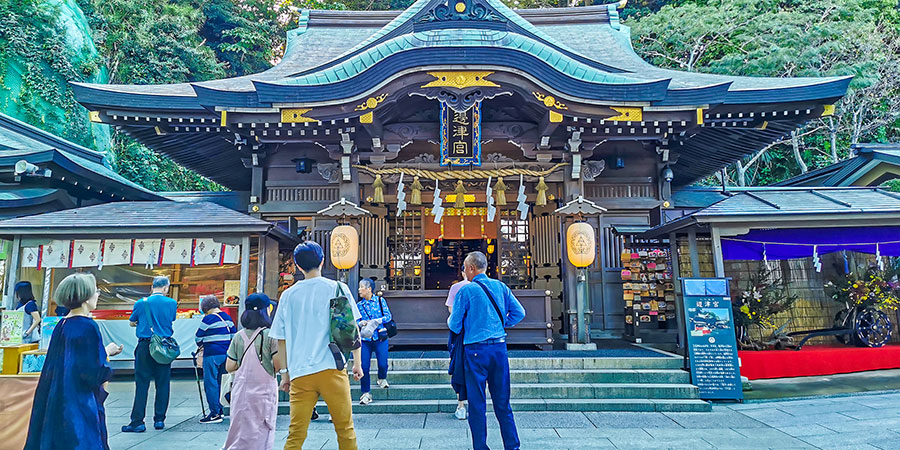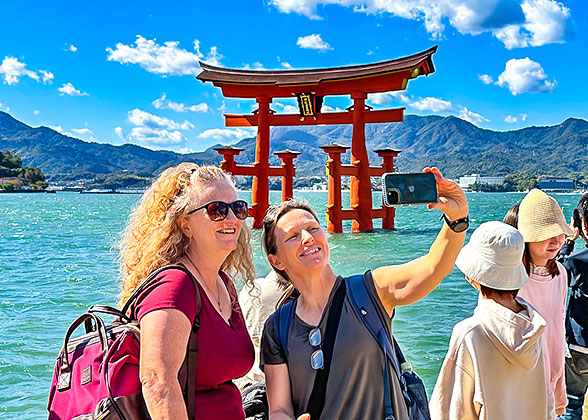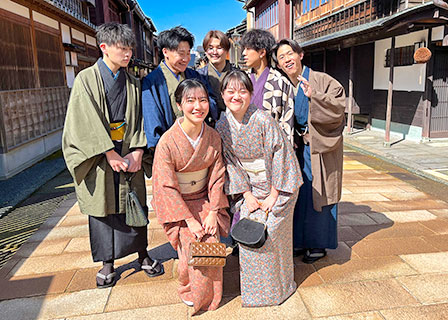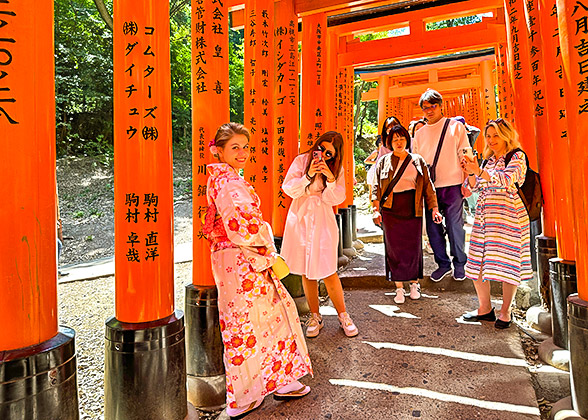- Tsurugaoka Hachimangu Shrine
- Enoshima Island
- Enoshima Jinja Shrinejia
- Kamakura Daibutsu
- Kamakurakoko-Mae Station
Enoshima Jinja Shrinejia
Enoshima Jinja Shrinejia is located on Enoshima Island in Kamakura and enshrines Myoon-Benzaiten, one of Japan’s three greatest Benzaitens – a Bodhisattva adept at music, so it is very popular among artists. With more than 1,400 years of history, the Shrinejia is mainly composed of three shrine buildings: Hetsumiya, Nakatsumiya, and Okutsumiya, each of which enshrines one goddess. You can make different wishes toward the three goddesses, such as wealth or a good marriage. In addition, Enoshima Jinja Shrinejia has two distinctive torii gates, which stand separately at the two ends of the commercial street, which is in front of the three shrine buildings. The major area of Enoshima Jinja Shrinejia is open free to visitors.

Hetsunomiya Shrine
|
What to Do in Enoshima Jinja Shrinejia
1. Make Wishes in Three Shrine Buildings
Three shrine buildings in Enoshima Jinja Shrinejia worship different goddesses: Hetsumiya is “lived” by the goddess of wealth and happiness; Nakatsumiya is where the goddess of romance is worshipped, and Okutsumiya enshrines the goddess of ocean. While many visitors would come to Hetsumiya, hoping to be lucky or wealthier in the future, Nakatsumiya and Okutsumiya can’t be missed as well.Nakatsumiya is popular, especially among young women due to special amulets offered here. The legend has it that this amulet can bless young women who want to become more beautiful or want to find their lover. Apart from that, there is a magic amulet – a water amulet, which children may like. No word can be seen upon it until it is dipped into the water.
In Okutsumiya, you can see a painting of a turtle. You would feel like the turtle is looking at you no matter where you stand, just like the gaze of the Mona Lisa. Here, you can pray for a safe voyage if you will go to sea.
|
|
|
2. See Benzaiten Statues
Enoshima Jinja Shrinejia houses one of the three major Benzaitens in Japan. Benzaiten is a female figure in Buddhism. The Bodhisattva is good at music and has a silver tongue. It is said she would bring wealth and eloquence to prayers. The Shrine is especially popular among artists as they believe their artistic creation abilities will be improved after worshipping here. There are two statues of Benzaiten displayed in the Hoanden which is next to Hetsumiya: Myoon-Benzaiten and Happi-Benzaiten. The former one is said to be donated to the Shrine in the Edo Period (1603-1868); the naked statue is made of porcelain, holding a lute in her arms. The latter wooden statue has more than 800 years of history; it has 8 arms and each holds weapons, including a bow, sword, precious stone, spear, and pestle.

The Shrine Building surrounded by Trees and Mountains
|
3. Take Photos near the Red and Green Torii Gates
Enoshima Jinja Shrinejia has two huge torii gates: one is the green Bronze Torri Gate at the entrance of the Shrine, and the other is the red Enoshima Shrine Gatehouse at the end of the commercial street. The former has about 200 years of history. Due to bronze rust, the Gate is present green and black. You can see the donator’s name engraved on its top. It has been designated as a local important cultural heritage. As for the wooden Enoshima Shrine Gatehouse, there is a huge wooden statue of a lute telling that the music goodness is enshrined here. They are good sites to take some memorable photos.
|
|
|
4. Pick up Something around the Lucky Stone
The legend has it that people will be lucky in the future if they pick up something around the Stone. Such a legend originated from a story 400 years ago. In 1600, a blind doctor tripped over the Stone and felt like being punctured by pine needles. The experience enlightened the doctor and later he invented acupuncture and moxibustion as one kind of medical treatment. In addition, many local people put one or two coins around the Stone to give blessings to those who come here later. The Lucky Stone hides secretly and is a little hard to find. After reaching the red torii gate, continually climb the steps on your right, and then you can find the Stone.How to Get There
Take the Enoshima Line and get off at Katase-Enoshima Station, walk for about 3 minutes to Enoshima Kaigan Bus Stop, take Bus 6 running toward Enoshima Island, get off after 2 stops, and then walk for 2 minutes to the entrance of Enoshima Jinja Shrinejia – the Bronze Torri Gate.Nearby Tourist Attraction
After visiting Enoshima Jinja Shrinejia, it is recommended to visit other places on Enoshima Island. For example, if you travel with your lover, you two can knock the Love Bell to pray for forever love or visit artworks displayed in Enoshima Iwaya Cave. Also, it is a great experience to see the panorama of the sea on the top of Sea Candle. The illumination show or candle show held around October and November are also wonderful, so don’t miss them.You May Like
-
 13 Days Private Tour of Tokyo - Kamakura - Mt. Fuji - Kyoto - Nara - Hiroshima - Osaka from USD4443
13 Days Private Tour of Tokyo - Kamakura - Mt. Fuji - Kyoto - Nara - Hiroshima - Osaka from USD4443 -
 11 Days Mini Group Tour for An In-Depth Exploration of Japan, to Tokyo, Hakone (Mt. Fuji)... from USD3554
11 Days Mini Group Tour for An In-Depth Exploration of Japan, to Tokyo, Hakone (Mt. Fuji)... from USD3554 -
 7 Days Mini Group Tour with Japan Highlights: Tokyo - Mt. Fuji - Kyoto - Nara - Osaka from USD2155
7 Days Mini Group Tour with Japan Highlights: Tokyo - Mt. Fuji - Kyoto - Nara - Osaka from USD2155

